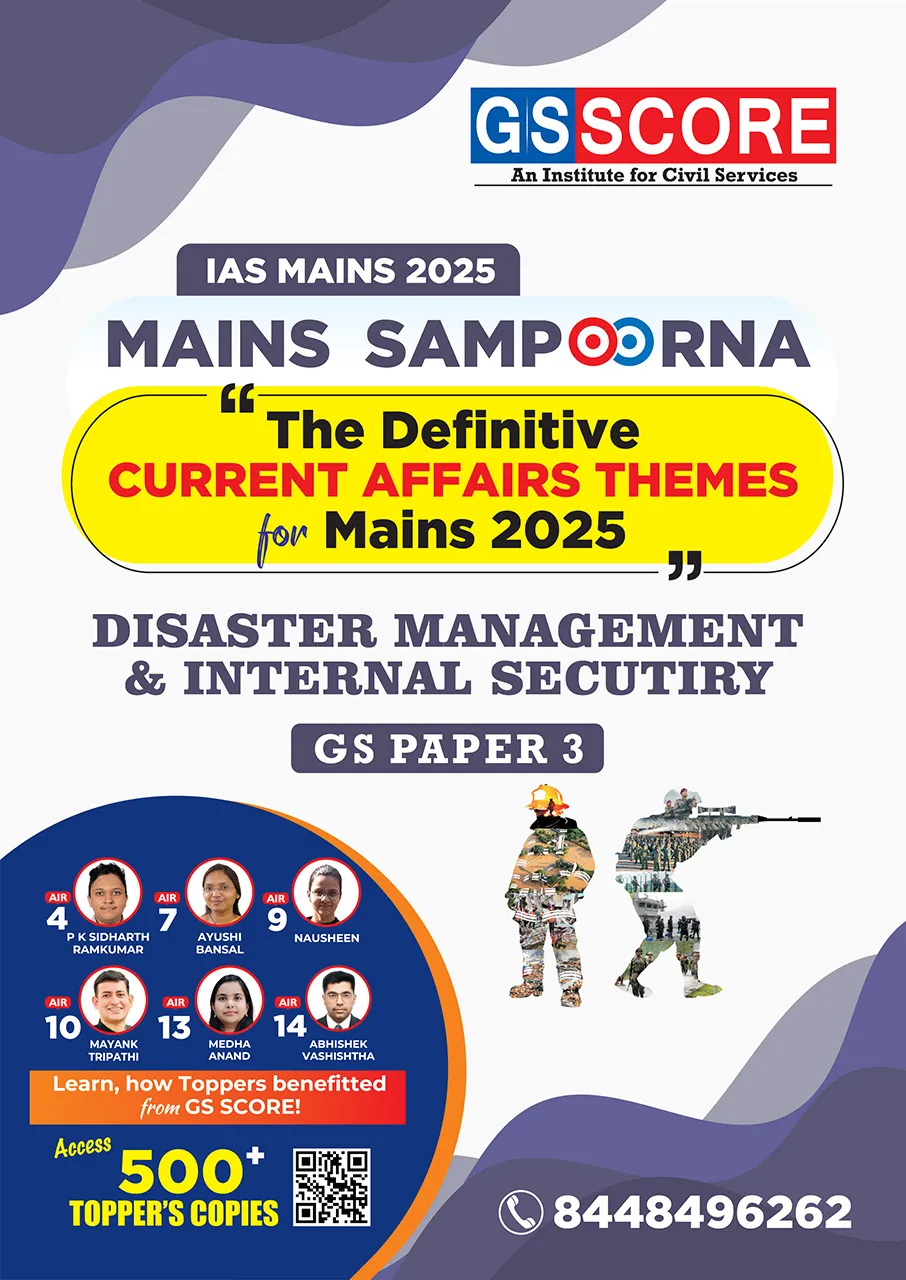


For IAS Mains 2025, Disaster Management and Internal Security remain two dynamic sections of GS Paper III that demand attention to both preparedness frameworks and evolving threats. The Mains Sampoorna: Contemporary Issues of Disaster Management & Internal Security booklet is a theme-wise collection of critical developments, institutional measures, vulnerabilities, and response mechanisms relevant to India’s changing risk landscape. It enables aspirants to engage with real-time challenges in a structured, analytical manner.
Key Features of the PDF
-
Dual-Segment Structure: Organised across two major segments—Disaster Management and Internal Security—covering 12 key themes such as Climate-Induced Disasters, Urban Flooding, LWE, Cybersecurity, Border Management, and Technology in Internal Security.
-
Recent Events and Institutional Insights: Includes real-world examples like Sikkim Glacial Floods, Joshimath Crisis, 2023 Manipur conflict, India’s updated NDMP and NDMA guidelines, and ISRO’s disaster risk mapping.
-
Policy & Programme Integration: Covers Agniveer scheme, ICJS 2.0, Raksha Shakti University, Digital Personal Data Protection Act, and updated roles of BSF, CAPFs, and NDRF.
-
GS Paper III Answer Enrichment: Features data sets, government schemes, case studies, and crisis-response best practices.
-
Cross-Paper Relevance: Themes such as misinformation, climate security, and institutional capacity provide value for Essay and Ethics as well.
How to Utilise This Book
-
Syllabus-Aligned Review: Use the two-segment approach for parallel revision of Disaster Management and Internal Security topics.
-
Enhance Answer Writing: Use examples like urban flash floods, cybercrime trends, and border disputes to build multi-dimensional arguments.
-
Incorporate Institutional Inputs: Draw on NDMA, MHA, ARC, and NITI Aayog recommendations to substantiate your points.
-
Develop Case Bank: Build a case repository with events like Tamil Nadu floods or Red Sea security threats for use in answers and essays.
-
Bridge Static and Current Affairs: Apply frameworks like Sendai Framework, Risk Resilience Matrix, and Crisis Management Cycle to Indian developments.
Mains Sampoorna – Disaster Management & Internal Security helps build clarity, structure, and relevance while preparing for complex national security and disaster governance questions in IAS Mains 2025.
Related Articles



